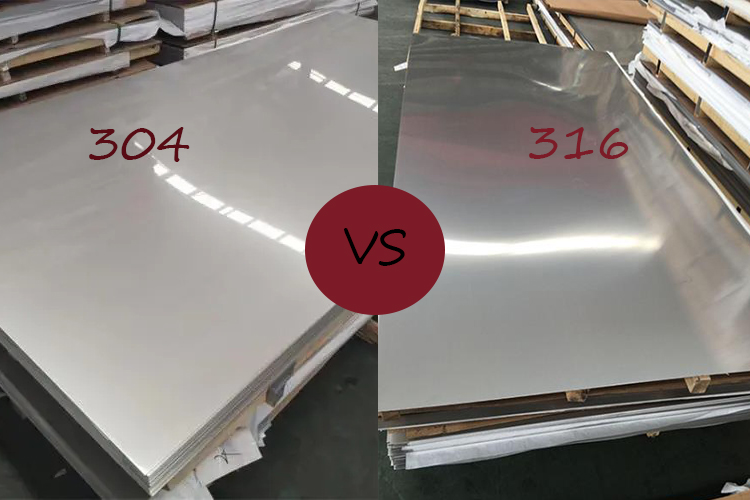What is the difference between 304 and 316 stainless steel?
The key difference between 304 and 316 stainless steel that makes them different is the addition of molybdenum. This alloy drastically enhances corrosion resistance, especially for more saline or chloride-exposed environments. 316 stainless steel contains molybdenum, but 304 does not.
304 and 316 stainless steel are two of the most common and versatile types of stainless steel. While they share many similarities,
there are key differences in their composition, corrosion resistance, and applications.
1. Chemical Composition:
- 304 Stainless Steel:
- Chromium: 18-20%
- Nickel: 8-10.5%
- Manganese: ≤2%
- Carbon: ≤0.08%
- 316 Stainless Steel:
- Chromium: 16-18%
- Nickel: 10-14%
- Molybdenum: 2-3%
- Manganese: ≤2%
- Carbon: ≤0.08%
Key Difference: 316 stainless steel contains 2-3% molybdenum, which is not present in 304. This addition improves corrosion resistance, especially against chlorides and other industrial solvents.
2. Corrosion Resistance:
- 304 Stainless Steel:
- It offers good corrosion resistance in most environments, particularly non-chlorinated water.
- 316 Stainless Steel:
- Superior corrosion resistance compared to 304, especially in harsh environments with exposure to saltwater, chlorides, and acids.
Key Difference: 316 stainless steel is more resistant to corrosion, making it ideal for marine, chemical, and other harsh environments.
3. Mechanical Properties:
- 304 Stainless Steel:
- Tensile Strength: ~505 MPa (73 ksi)
- Yield Strength: ~215 MPa (31 ksi)
- 316 Stainless Steel:
- Tensile Strength: ~515 MPa (75 ksi)
- Yield Strength: ~290 MPa (42 ksi)
Key Difference: 316 has slightly higher tensile and yield strength, but the difference is minor.
4. Applications:
- 304 Stainless Steel:
- Commonly used in kitchen equipment, household appliances, automotive trim, architectural applications, and industrial containers.
- 316 Stainless Steel:
- Preferred for environments that require enhanced corrosion resistance, such as marine equipment, chemical processing equipment, pharmaceutical and medical devices, and high-salinity environments.
Key Difference: 316 is used where superior corrosion resistance is required, especially in harsh environments.
5. Cost:
- 304 Stainless Steel:
- Generally less expensive due to the absence of molybdenum.
- 316 Stainless Steel:
- More expensive due to the addition of molybdenum, which improves corrosion resistance but increases the material cost.
Summary:
- 304 Stainless Steel is an all-purpose stainless steel with good corrosion resistance, commonly used in environments where the risk of corrosion is low.
- 316 Stainless Steel offers better corrosion resistance, particularly against chlorides and other corrosive substances, making it ideal for more demanding environments.
Choosing between the two often depends on the specific environmental conditions and the required level of corrosion resistance.
Post time: Sep-04-2024


